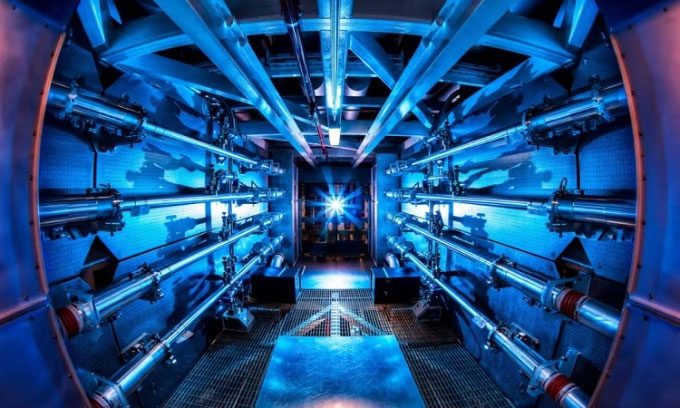The National Ignition Facility at Lawrence Livermore National Laboratory has achieved energy from nuclear fusion through the use of lasers to merge two atoms.
American scientists have reached a level of net energy gain from nuclear fusion for the second time since the historic breakthrough last December in the quest for a nearly limitless clean energy source, according to the Guardian. The research team at Lawrence Livermore National Laboratory in California replicated the breakthrough in an experiment at the National Ignition Facility (NIF) on July 30, resulting in higher energy output than the initial attempt. According to a laboratory spokesperson, final results are still under analysis.

Module in nuclear fusion experiment at Lawrence Livermore National Laboratory. (Photo: Reuters).
Nuclear fusion involves merging two light elements like hydrogen to form heavier elements, releasing enormous amounts of energy in the process. This is the reaction that provides heat and light to the Sun and other stars. This method is believed to have immense potential to deliver a sustainable energy source with low emissions.
In December 2022, Lawrence Livermore first achieved a net energy gain in a nuclear fusion experiment using lasers. That experiment produced 3.15 megajoules of energy after the laser delivered 2.05 megajoules to the target. In other words, it generated more energy from the fusion reaction than the amount of energy used by the laser.
The U.S. Department of Energy described the experiment as a “significant scientific breakthrough” that paves the way for advancements in national defense and the future of clean energy. Nuclear fusion offers the potential for a plentiful clean power source. The reaction does not release greenhouse gases or produce radioactive waste byproducts. One kilogram of fusion fuel, consisting of heavy isotopes of hydrogen such as deuterium and tritium, provides energy equivalent to that of 10 million kilograms of fossil fuel.
Scientists caution that the technology is far from ready for deployment in power plants and will not solve the climate crisis in the immediate future. However, they note that the latest achievements are evidence that we can harness the energy of stars here on Earth.


















































